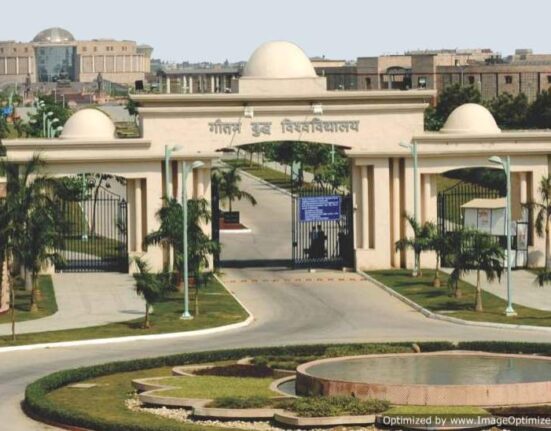Simran Jain, a 4th-year law student of SNDT University has written this article on “Process of Patent Registration”.
PROCESS OF PATENT REGISTRATION
The patent is an exclusive right granted to the Patentee over his/her invention for a limited period of time. Additionally, through Patent Registration, the patentee shall have all the rights regarding controlling, making, using, selling, or importing patented product or process for producing that product. After Patent Registration, no one will be able to use the invention without the consent of the patentee. However, whether the invention is patentable or not depends upon various factors such as the invention must be innovative which involves an inventive step and which can be used in industry.
- In India, to consolidate the laws relating to Patent there are a Patent Act 1970 & Patent Rules 1972.
With Patent Registration, you can obtain an intellectual property right over an invention. Henceforth, for Patent Registration, an application can be filed either by an individual or a firm. To grant an exclusive right over invention (If it is unique) there is an Intellectual Property Department established by the Indian government. To prove that invention is unique, the inventor has to produce all the evidence in connection with the invention.
- Applications concerned with Patent Registration are managed by “The Patent Office, Controller General of Patents, Designs & Trade Marks”. Patent Registration applications can be electronically filed along with the provisional or complete specification with the prescribed government authority. The invention can be a process, art, manufacturing method, computer software, or chemicals or drugs.
The patent registration process is not lifelong and it is valid only for a period of 20 years from the date patent registration application is filed with the authority (http://www.ipindia.nic.in/) irrespective of the fact whether an application is filled with the provisional or complete specification. After a period of 20 years, it falls under the public domain.
What can be Patented in India?
Before Starting the Patent Registration process in India, it is important to get to know what patentable innovations are.
The invention can be related to work, process, manufacturing, machine-related, computer software, or any other kind of invention which has never been invented to the general public[1].
What is the Importance of Patent Registration [2]?
Legal Protection to Invention :
Patent Registration gives legal protection to an invention of the patentee. Therefore, in the case of patent infringement, the patentee has the right to take action and can sue for damages. If the invention is not registered then legal protection is not enforceable.
Transferable Rights:
Patent Registration gives the patentee a right to sell or transfer a patent as it helps in raising revenue.
Validity Period of 20 days :
After Paten Registration, an invention is legally protected for a period of 20 years.
Competitive Advantage :
Patent Registration gives a competitive advantage to the business. Therefore, for similar products, competitors will not be able to use the patented invention.
Asset Creation :
Patent is an Intellectual Property Right, therefore, Patent Registration is given an exclusive right. A patent is an intellectual asset for a business that can be sold, transferred, or commercially contracted.
Criteria for Filing Patent Registration Application
Novelty
The invention must be a new development and prior to the date of filing a patent application, it must have not been published anywhere in India.
Non-Obviousness
Invention must not be obvious in nature and it must be considered by the skilled person unexpected or surprising development.
Industrial Applicability
The invention must be capable to use in industry.
Documents for filing Patent Registration Application
For filing a Patent Registration application in India, the documents required are as under :
- An Application for Patent Registration in Form-1
- Complete specifications in Form-2 however if not available then Provisional Specification
- Statement and Undertaking n Form-3
- A declaration from the inventor as to inventorship in Form 5;
- Proof from the inventor regarding the right to file a Patent Registration application
- If a Patent Registration application is filed by the patent agent/patent attorney then the power of authority in Form-26[3]:
In case of convention application (Paris convention) or PCT national phase application, one has to file priority documents along with the application or within 18 months from the priority date; It is required to submit the National Biodiversity Authority permission in case the application is related to biological material obtained from India.
The source of origin of any biological material used in the specification should be clearly indicated in the Patent Registration application form.
- The patent Registration application must be signed by an applicant/ Patent attorney with the name & date and the Specification (Complete or Provisional) must also be signed on the last page along with the date.
Forms required to be filed for Patent Registration Application
Forms to be filed — Explanation
| Form Name | Purpose |
|---|---|
| Patent Registration Application – Form 1 | To apply for the registration of a patent. |
| Provisional or Complete Specification – Form 2 | To provide a description of the invention, either provisional or complete specification. |
| Statement and Undertaking under Section 8 of The Patents Act, 1970 – Form 3 | To declare whether the invention has been filed in any other country and to undertake to keep the patent office informed of such filings during the pendency of the Indian patent application. |
| Inventorship Declaration – Form 5 | To declare the names and details of all the inventors involved in creating the invention. |
| Publication Request – Form 9 | To request the early publication of the patent application. |
| Examination Request – Form 18 | To request the examination of the patent application. |
| Patent Agent Authorization – Form 26 | To authorize a registered patent agent to act on behalf of the applicant during the patent registration process. |
| For Small Entity – Form 28 | To claim a reduced fee for patent registration for small entities, as per the criteria defined by the patent office. |
PROCESS OF PATENT REGISTRATION :
Patent registration is a crucial step for inventors and innovators looking to protect their intellectual property. By obtaining a patent, individuals or organizations can secure exclusive rights to their inventions, preventing others from making, using, or selling their creations without permission. However, the process of patent registration can be complex and requires a thorough understanding of the steps involved. Hence, in this article we will provide a comprehensive guide to the process of patent registration, outlining each step along the way.
Conduct a Preliminary Search :
Before proceeding with a patent application, it is essential to conduct a preliminary search to ensure your invention meets the criteria for patentability. As, this search helps you determine if a similar invention already exists, which could potentially affect the success of your application[4]. Hence, Various databases and resources, such as patent databases and literature searches, can assist in this preliminary investigation.
Prepare a Detailed Description of the Invention:
Once you have determined that your invention is unique, it is time to prepare a detailed description of your invention. This description should be comprehensive and include all relevant information about your invention, including its purpose, structure, and functionality. Additionally, it is crucial to include any supporting diagrams, drawings, or prototypes that help illustrate the invention’s features and operation.
File a Patent Application:
The next step is to file a patent application with the appropriate intellectual property office or agency. In the United States, for example, this would be the United States Patent and Trademark Office (USPTO). The patent application typically consists of the following components :
a. Title: A concise and descriptive title for your invention.
b. Abstract: A brief summary of your invention’s technical features and advantages.
c. Claims: Detailed statements defining the scope of your invention’s protection.
d. Description: A comprehensive description of your invention, including any supporting figures.
e. Drawings: Illustrations that provide a visual representation of your invention.
Patent Examination:
After filing the patent application, it undergoes a thorough examination process. During this stage, a patent examiner reviews the application to determine if the invention meets the requirements for patentability, including novelty, non-obviousness, and industrial applicability. However, the examiner may request additional information or modifications to the application, and the applicant is typically given an opportunity to respond within a specified timeframe.
Patent Grant or Rejection:
Based on the examination, the patent office will either grant the patent or issue a rejection. Therefore, If the examiner determines that the invention meets all the criteria for patentability, a patent is granted. On the other hand, if the examiner finds issues with the application, such as lack of novelty or obviousness, they may reject the application. Henceforth, in case of rejection, the applicant can respond with amendments, arguments, or evidence to overcome the examiner’s objections[5].
Patent Maintenance:
Once a patent is granted, the inventor or assignee must pay regular maintenance fees to keep the patent in force. Furthermore, these fees are typically due at specific intervals and may vary depending on the country or region where the patent is registered. Failure to pay the maintenance fees can result in the expiration or invalidation of the patent.
What is the Validity Period of the Registered Patent in India?
The patent is valid for a period of 20 years in India, from the date the provisional or complete patent registration application is filed. After completion of the prescribed 20 years, it would fall under the public domain.
What is Patent Renewal and how one can Apply for it?
To keep the Patent alive, it has to be renewed every year. Therefore, a patent must be renewed mandatorily, in case the patent is not renewed then it will be ceased to exist and it shall pass on to the public domain. In India, a patent can be renewed for one year by filing a patent renewal application along with the prescribed fees by the patentee. Additionally, the patent renewal fee is payable at the end of the 2nd year from the date of patent registration.
In case of non-payment of renewal fees within the prescribed time, patent gets ceased to effect then it can only be stored by filing a restoration application in the prescribed Form-15 within the period of 18 months from the date patent got ceased to effect.
CONCLUSION :
The process of patent registration is a critical journey for inventors seeking to protect their intellectual property rights. Therefore, by following the steps outlined in this article, including conducting a preliminary search, preparing a detailed description, filing a patent application, undergoing examination, and maintaining the patent, inventors can navigate the complex process successfully. Remember, seeking professional advice from a patent attorney or agent can provide additional guidance and increase the chances of successful patent registration.
[1] https://enterslice.com/patent-registration#:~:text=The%20patent , https://blog.ipleaders.in/patent-registration-process-in-india/
[2] https://blog.ipleaders.in/patent-registration-process-in-india/ , https://cleartax.in/s/patent-registration
[3] https://cleartax.in/s/patent-registration , https://ipexcel.com/in/patent_registration_in_india_new.html#:~:text=The%20India%20Patent
[4] https://enterslice.com/patent-registration#:~:text=The%20patent%20is%20an%20exclusive,process%20for%20producing%20that%20product.
[5] https://blog.ipleaders.in/patent-registration-process-in-india/






